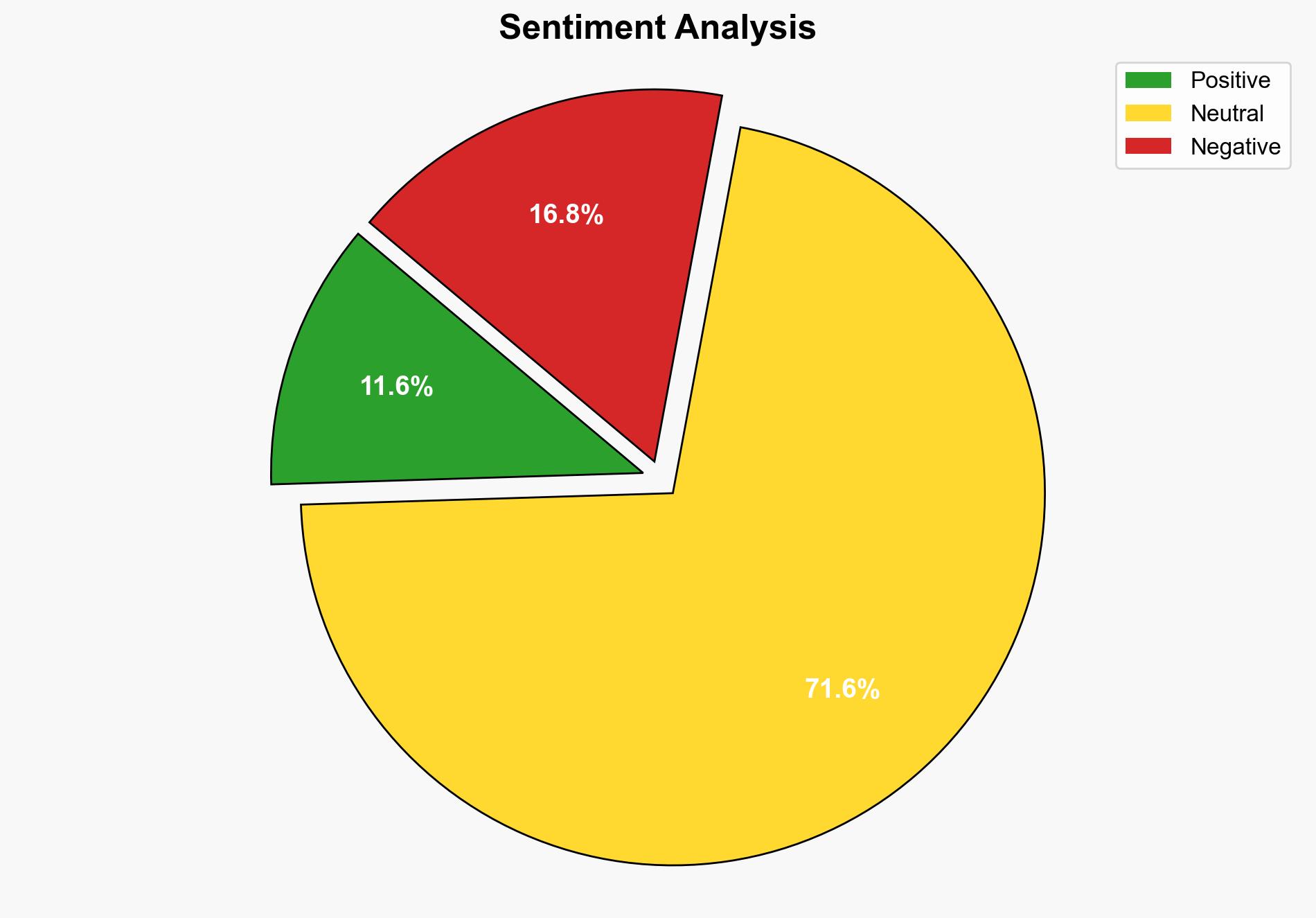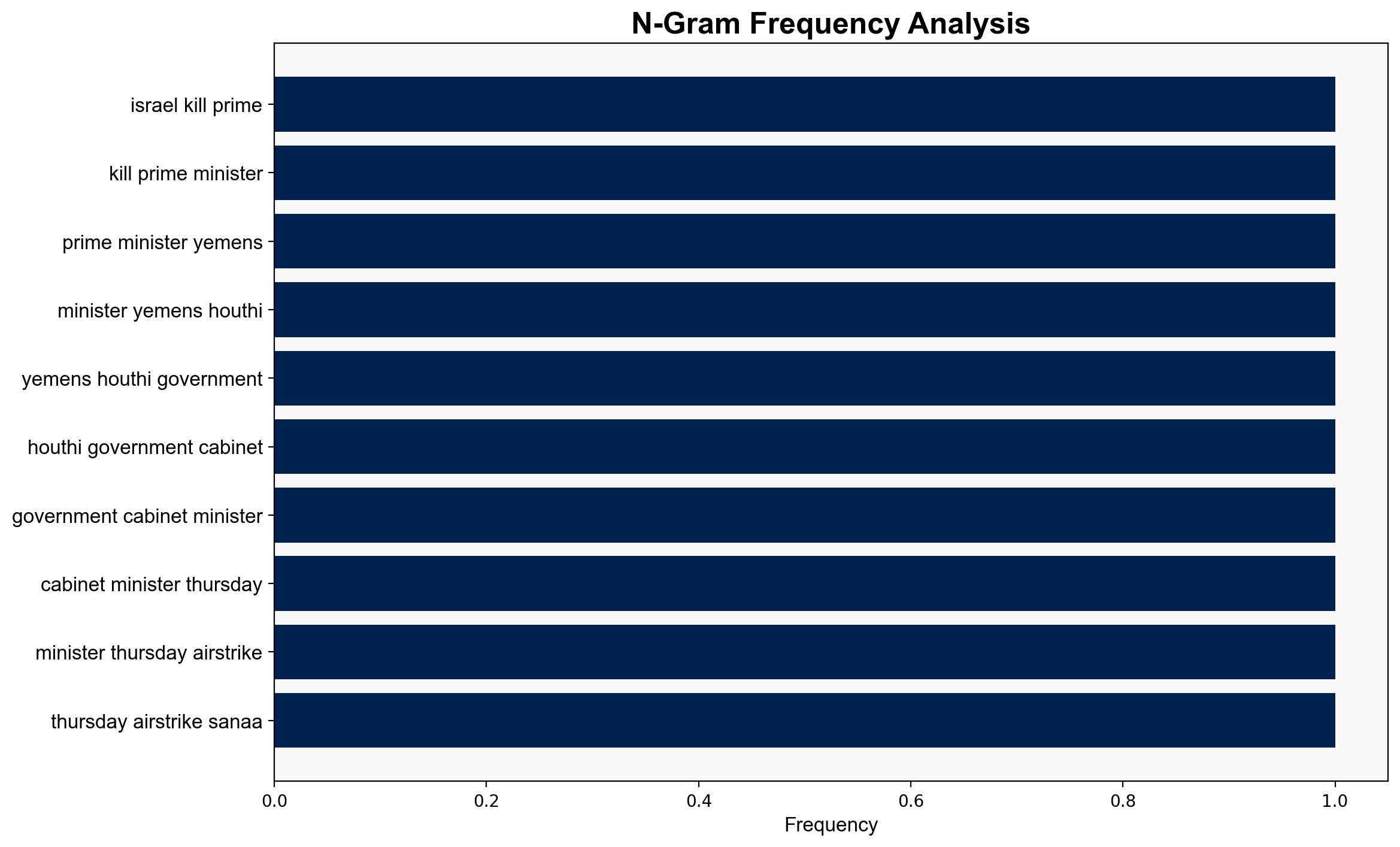Israeli Forces Kill Prime Minister Of Yemens Houthi Government In Air Strike – The Daily Caller
Published on: 2025-08-30
Intelligence Report: Israeli Forces Kill Prime Minister Of Yemens Houthi Government In Air Strike – The Daily Caller
1. BLUF (Bottom Line Up Front)
The most supported hypothesis is that the Israeli airstrike was a strategic operation aimed at disrupting the leadership of the Iran-aligned Houthi government in Yemen. This action is likely a response to Houthi aggression in the Red Sea and their solidarity with Palestinian actions against Israel. Confidence in this hypothesis is moderate due to the complexity of regional dynamics and potential undisclosed motivations. Recommended action includes monitoring regional responses and preparing for potential retaliatory actions by Houthi forces or their allies.
2. Competing Hypotheses
1. **Hypothesis A**: The Israeli airstrike was a targeted operation to eliminate a key figure in the Houthi leadership, aiming to weaken the Iran-aligned group and reduce its capacity to threaten Israeli interests.
2. **Hypothesis B**: The airstrike was primarily a defensive measure in response to recent Houthi missile attacks on Israeli interests, intended to deter further aggression and demonstrate military superiority.
Using ACH 2.0, Hypothesis A is better supported due to the strategic nature of targeting a high-ranking official, which aligns with broader geopolitical objectives. Hypothesis B, while plausible, lacks direct evidence linking the airstrike solely to recent missile attacks.
3. Key Assumptions and Red Flags
– **Assumptions**: The intelligence assumes accurate identification of the target and successful execution of the operation without significant collateral damage. It also presumes the Houthi leadership’s response will be limited to rhetoric.
– **Red Flags**: The report lacks detailed confirmation of the strike’s impact on Houthi operational capabilities. Potential bias in attributing motives solely to Israeli defense without considering broader geopolitical strategies.
– **Missing Data**: Specific intelligence on the decision-making process within the Israeli military and potential international diplomatic communications preceding the strike.
4. Implications and Strategic Risks
The airstrike could escalate tensions in the region, potentially leading to increased Houthi attacks on Israeli or allied targets. This may also strain Israel’s relations with other regional actors sympathetic to the Houthi cause. Economically, disruptions in the Red Sea shipping lanes could impact global trade. Cyber retaliation by Houthi or Iranian-backed entities poses additional risks.
5. Recommendations and Outlook
- Enhance intelligence-sharing with regional allies to anticipate Houthi retaliatory actions.
- Prepare for potential cyber threats by strengthening cybersecurity measures.
- Engage in diplomatic efforts to de-escalate tensions and prevent further military confrontations.
- Scenario Projections:
- Best Case: Successful deterrence with no further escalation.
- Worst Case: Escalation into broader regional conflict involving multiple state and non-state actors.
- Most Likely: Continued low-intensity conflict with sporadic retaliatory actions.
6. Key Individuals and Entities
– Ahmad Ghaleb Al Rahwi
– Mahdi Al Mashat
– Mohamed Moftah
– Abdul Malik Al Houthi
7. Thematic Tags
national security threats, regional focus, counter-terrorism, geopolitical strategy





